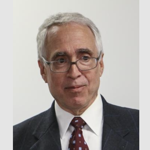Cupcakes of Reform
![]()
eople who care about government are right to be worried about the coming federal retirement wave. As reported in the September 1999 issue of Government Executive and more recently in The Washington Post, roughly half the federal government's 1.6 million employees will be eligible to retire by the year 2005. Although no one expects an exodus all at once, the retirement bulge is prompting a renewed interest in everything from succession planning to entry-level recruitment.
No one appears to be more interested in action than Sen. George Voinovich, the freshman Republican from Ohio. Barely a year into his first term, Voinovich has become Washington's strongest advocate of public service reform. As chairman of the Governmental Affairs Subcommittee on Oversight of Government Management, Restructuring and the District of Columbia, the former county administrator, big-city mayor and governor has become the federal government's best hope for action, easily eclipsing the Clinton administration's reinventors, who gave up on civil service reform at the first sign of resistance in 1993.
Having concluded that the federal government is facing a human capital crisis, Voinovich is at a crossroads. He must decide whether to take baby steps toward reform by tinkering with the current personnel system or map out a more comprehensive course that starts from scratch.
Voinovich would have plenty of company on the incremental path, most notably the government's Office of Personnel Management. Word is that OPM is preparing an agenda of modest reform, including higher entry-level pay, college debt relief, new internship programs and a corporate exchange program for senior executives. Although the changes would no doubt make government more inviting to those who want 30-year careers, they will not create the kind of flexible careers that many public servants want today.
The proof is in recent surveys of the graduates of America's top public policy and administration programs in which the federal government now runs a poor fifth against private firms, nonprofit agencies and state and local governments in the annual recruiting contest. If students who went to graduate school to prepare for careers in public service are not interested in federal destinations, it is hard to imagine how government can compete for students who have no interest in public service at all.
Pay clearly matters to some of these graduates, particularly those with mounds of debt. But even if higher starting salaries and modest debt relief brings more of these students into the federal government for a first job, there is little evidence that they will stay for long. Pay is not the primary reason most talented Americans enter public service and is most certainly not why they stay. They come to make a difference, to help people and to be challenged.
Unfortunately, the federal government has lost its recruiting advantage as a high-impact employer. Thirty years ago, for example, graduates of the top public policy and administration graduate schools said government was the place to go to help people. Today, that honor belongs to the nonprofit sector. Even students who work in government have serious doubts about their ability to make a difference, in no small part because of the towering hierarchies and narrow career paths that face new recruits.
Even when the federal government captures top graduates, it excels at encouraging them to leave, whether by offering voluntary buyouts, portable retirement packages or constant threats of downsizing. Once gone, government does almost nothing to call them back. Middle-level openings are routinely filled from the inside, executive exchanges run one way out, and the internship programs only focus on the entry level. All the while, the federal government's ridiculously outmoded classification system Balkanizes the current workforce into well-defended categories. The real brain drain does not occur at retirement, but far down the career ladders as talent leaches out employee by employee over the years.
These problems cannot be fixed with "cupcakes of reform," as some at OPM call their growing list of modest proposals. They demand the kind of bold action that would replace today's outmoded system with a slimmer, more flexible model that allows talent to move in and out with ease. And they demand an attack on the over-layered hierarchy that prevents talented employees from moving quickly into high-impact jobs.
Although time is running out for the 106th Congress, Voinovich and his ranking member, Illinois Democrat Richard Durbin, could take a dramatic step toward comprehensive reform with a single proposal: Abolish the federal classification system on midnight, Dec. 31, 2001. It is just the kind of action-forcing event that might produce the first significant reforms in a quarter century. Not only would a sunset give Congress enough time to build a new governmentwide system, it would encourage agencies to develop backup systems to fit their needs.
Luckily, a sunset carries no risk. The current system is so bad, time-consuming, wasteful and divisive, that practically anything the agencies might invent in its wake would be better. This is one case where nothing actually would beat something.
Paul C. Light is the author of The New Public Service (Brookings Institution Press, 1999).
Contact him at plight@govexec.com.
NEXT STORY: Keep on Measuring Customer Satisfaction







